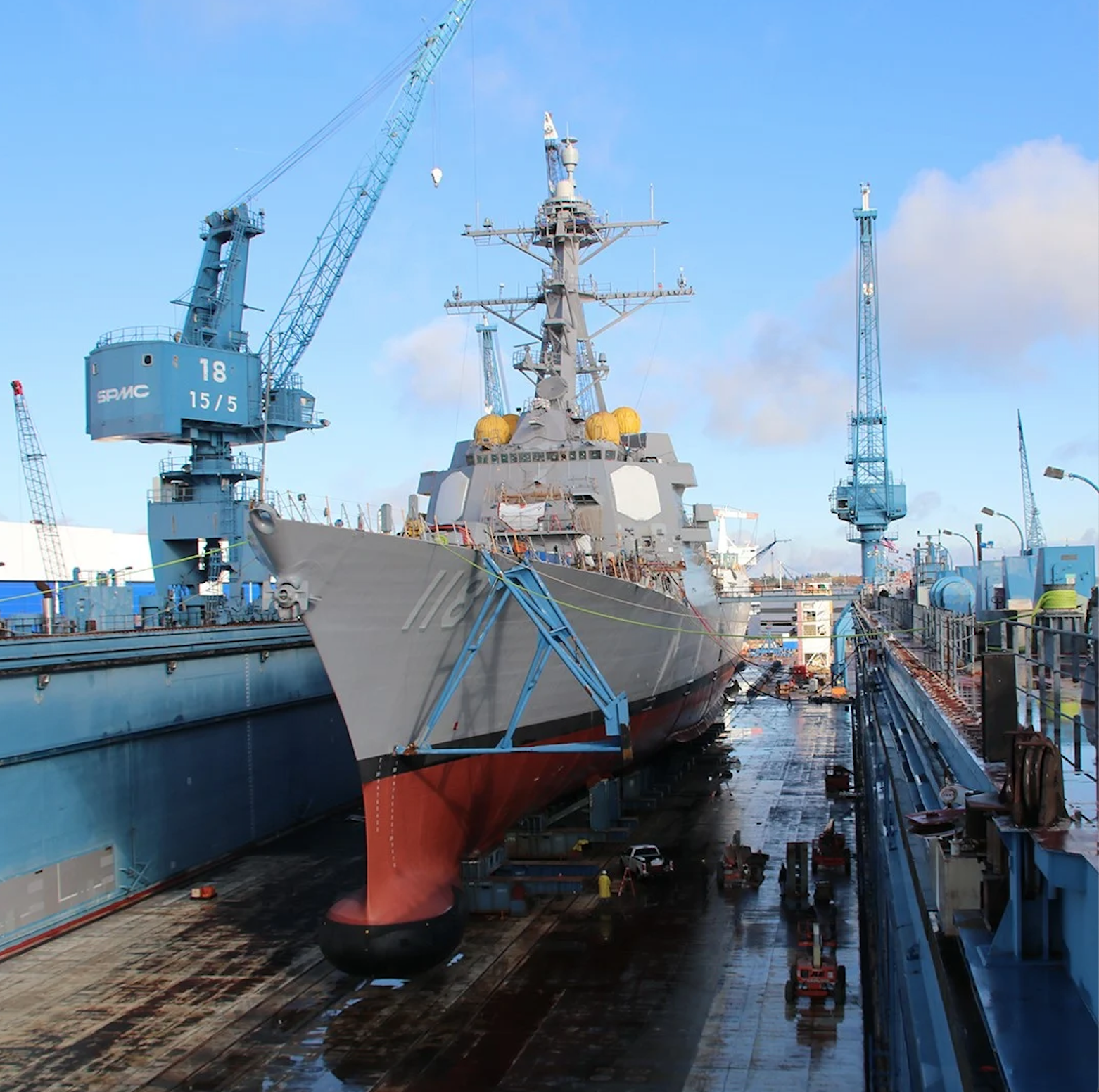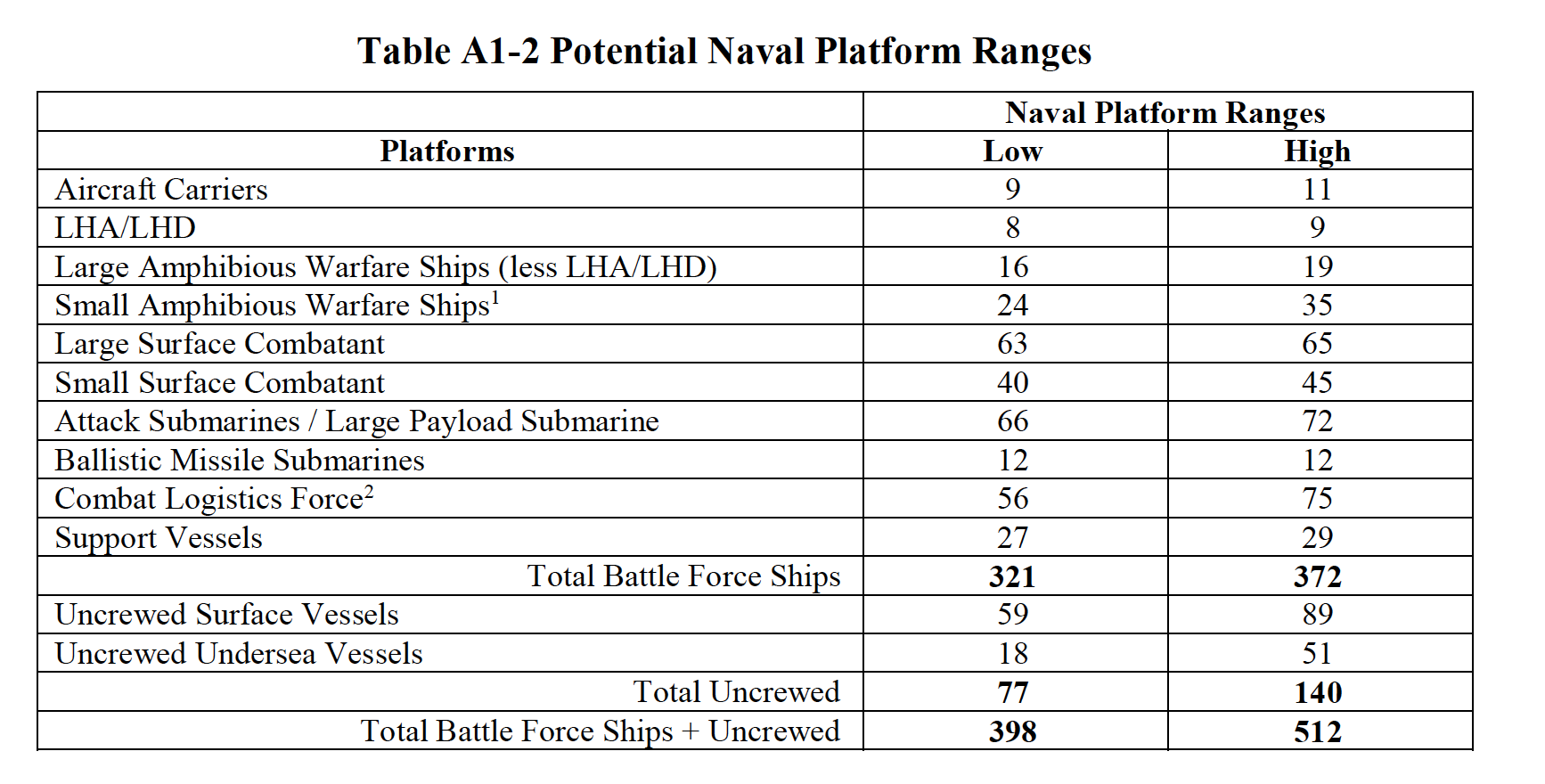
The Pentagon submitted an abbreviated long-range shipbuilding report to Congress that does not show construction past the Fiscal Year 2022 budget request, according to the document reviewed by USNI News on Thursday.
Instead, the Navy issued a summary of the eight-ship FY 2022 shipbuilding request, with a promise for the Office of the Secretary of Defense and the service to further refine the needs of the Navy for a complete outlook as part of the Fiscal Year 2023 budget submission.
“The Navy, working closely with the OSD Director of Cost Assessment and Program Evaluation (CAPE), continues to develop comparative assessments of naval force structure options consistent with Interim National Security Strategic Guidance and designed to maximize the maritime contribution to the joint force,” reads the report that was released on Thursday evening.
“The results of these efforts and ongoing experimentation and prototyping will be reflected in the FY2023 shipbuilding plan.”
In lieu of the traditional tables that would have outlined the Navy’s projected buys through 2052, the Thursday plan published a chart that, “depicts ranges for critical naval platforms that, taken together with broader Naval and Joint Force capabilities, incorporate combat effectiveness, production feasibility, and likely fiscal limits. Investment priorities include ensuring sufficient capacity in our survivable and lethal submarine force, maintaining the Joint Force’s most survivable and adaptable aviation base in the aircraft carrier, and increasing the small surface combatant force to better support distributed maritime operations.”
The range shows a fleet size from 321 to 372 manned ships, along with a range of 77 to 140 unmanned vessels with no timeline for completion of the work.
The Navy’s previous goal had been 355 hulls laid out by the service’s 2016 force structure assessment. The Trump administration issued a December shipbuilding plan that would have pushed the shipbuilding budget to $34 billion a year by FY 2025.
“355 is a good goal to shoot for,” Secretary of Defense Lloyd Austin told the Senate Appropriations Committee when asked about the shipbuilding budget on Thursday.

“You have my commitment that I will continue to work with the committee to do everything I can to resource our Navy. We have the dominant naval force on the face of the planet. It has been so in the past. It is so now. It will remain so going forward. I absolutely agree that 355 ships is a good goal to shoot for,” he said. “I want to make sure that we have the right mix of capabilities – size matters – but capabilities also matter. We’re going to continue to work with the Navy and with this committee to make sure the right capabilities are in place.”
The scant report reflects the limited long-range budget information that was included as part of the overall FY ‘22 submission. The Pentagon did not include a summary of the Future Years Defense Plan (FYDP) that presents a five-year spending outlook for the Defense Department and the individual services.
It’s not uncommon for a new administration to not file a 30-year plan with its first budget, “on the grounds that they were spending that year reviewing and revising the previous administration’s defense strategy, plans, and programs, so as to create a basis for subsequently devising a 30-year shipbuilding plan,” according to the Congressional Research Service.
The placeholder report issued at the direction of OSD is a departure from not issuing a report at all and instead a preview of the report that will be issued the next year.
“Ongoing analysis and experimentation will define required combat effectiveness and emphasize the focus on warfighting capability and readiness. This analysis and experimentation will be informed by operationally relevant metrics including, but not limited to, lethality, survivability, operational reach, vertical launch system cells, torpedo tubes, sortie generation rates, lift capacity, affordability, and industrial base viability and capacity,” reads the plan.
The report drew complaints from at least one lawmaker.
“The law requires a 30-year shipbuilding plan and a future years defense plan (FYDP). Neither has been provided by the Pentagon,” Rep Elaine Luria (D-Va.) said in a statement.
“If we assume that next year’s budget will also fail to enable the force structure that we need, we will be forced to make broad cuts to other programs to fund the force structure that the Navy cannot articulate themselves. When the Navy provides ranges of ships needed it is clear that they do not have a strategy that defines actual requirements, otherwise it would be a discrete and defensible number.”





